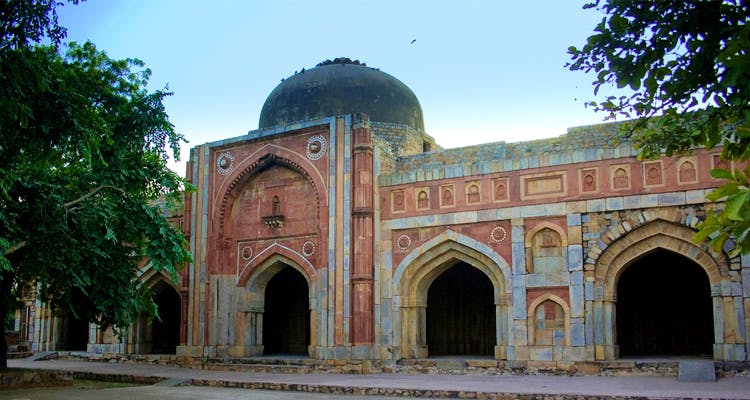Winter afternoons are made infinitely more interesting when one walks through a rusted stile into one of Delhi’s many historical ruins, on a walk back in time, the ghosts of the past heard when the wind whistles through the stones.
When a city is as old as Delhi, there are often sites where a walk over a couple of hours will literally take you, step by step, from one era to the next. Standing in the shadow of a 13th Century ruin, you will barely be done walking past, say, the fifth monument, when you will realise that you’re in a building of the 1850s now, six hundred years of history on either side of your footsteps on the dusty path.
Mehrauli is one of those treasurehouses where the stories of the past can go on for years, and you might still not run out. I’ve written about the place twice already, once about the Qutb Complex, and once more about Bakhtiyar Kaki’s Dargah. So this place is seminal in Delhi’s history, in that it houses literally the second most iconic Indian monument, the grave of the holy man who put Delhi on the Sufi world map and, as we shall see now, as rich a collection of not-so-iconic, yet breathtaking monuments as you could hope to find anywhere in the world.
For starters, the Mehrauli Archaeological Park, located behind the Qutb and accessed from opposite the Qutb Minar metro station, is a rather quiet place. One of those where you may spend some time with yourself, peacefully reflecting upon whatever it is you usually reflect upon. {If you don’t, hold up a mirror to yourself. Reflect!}. Nature has reclaimed a lot of the land that once housed tombs of the dead and quarters of the living, the ruins rising amid an unruly tangle of bushes, grasses and stunted trees. Here, the masonry cores of old buildings lie stripped of their elegant stone facades, a sliver of calligraphy and plaster in the odd corner, the only sign of their glory in a time long gone. The elegance of the buildings still remains, though, as you see the V-stone which marks the first true arch made in India at the tomb of Balban, the Mamluk Sultan. The king’s grave lies fairly well-preserved amidst the ruins, though soot has blackened a lot of the calligraphy, as people come with offerings and burning incense to seek the great man’s blessing. A steep stair leads up to the ruins of what may have been soldiers’ quarters, the walls barely waist high today, little niches and fireplaces visible on the inside.
Here you see the first signs of the British owner Sir Thomas Metcalfe, the British Resident at the court of Bahadur Shah Zafar. Comparatively modern gateways flank the medieval monuments.
In the compound also stands the Jamali Kamali Mosque, and adjacent to it, the mausoleum of the two eponymous nobles, little gems of early Mughal architecture that gave way to the magnificent buildings of later years. Atop a grassy knoll you will also see Metcalfe’s Folly, a plain, but picturesque stone pavilion that you will take for a Mughal monument. Here is where you get lovely views of the Qutb Minar in all its splendour.
Walk a little inwards, and you come to the Rajon ki Baoli or Mason’s Stepwell, another ingenious medieval relic, a source of water and also a fantastic hideaway from the searing heat of the summer. As you walk past countless unidentified, nameless ruins, the mind feels swamped by the sheer wealth of historical information. It only gets better when you cross the long, low-railinged Metcalfe Bridge to walk over to the old knight’s retreat, the Dilkusha, built as an extension to what was initially the tomb of Quli Khan.
It is an old medieval tomb, its calligraphy and engravings intact, with anterooms added by Sir Metcalfe. The ruins are an amazing window into two different times, the medieval walls running near the modern ones, the former arched in the ‘traditional’ way, while the latter are square. When here, look around at the dovecote, where birds were fed, and at another one of the follies out in the open.
Sit back and watch the boys of the locality as they play a game of cricket. Sachin retired recently, did he not? Sportsmen are the legends of our day, and if there is anything to take back from a walk through ruins that tell a tale spanning 600 years, it is that legends will always live on, even after the people who made them are dust and ashes.

